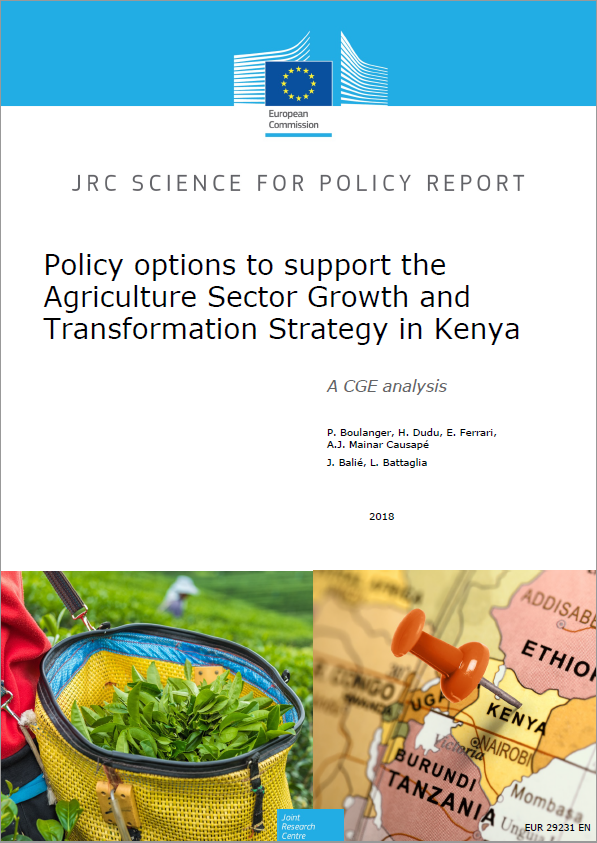
A recently published JRC report assesses policy options to support the new Agriculture Sector Growth and Transformation Strategy (ASGTS) in Kenya. The report also gives an analysis of the food value chain and some policy recommendations on how to pursue agricultural transformation. The report was prepared in cooperation with colleagues from the Food and Agriculture Organization's Monitoring and Analysing Food and Agricultural Policies (FAO-MAFAP).
The economy of Kenya is the largest by GDP in eastern and central Africa. Under Kenya Vision 2030 (Kenya's development programme from 2008 to 2030), agriculture (a major employer) is expected to drive annual economic growth to around 10%.
As Kenya's current Agriculture Development Strategy (2010-2020) is not compliant with its new constitution (adopted in 2010), the Kenyan government is developing a new ASGTS that fits into the new global dynamics of the agricultural sector, while continuing its policy of increasing productivity and farmers' incomes.
This JRC report provides a quantitative assessment of policy options to support this new strategy. It finds that investing greater resources in agricultural and rural development will be generally positive for the Kenyan economy (leading to incremental GDP growth of a decimal point every year), and could have a positive effect on economic growth and food security.
Based on an assessment of the social and economic impacts of the various policy interventions using the JRC's SAM Kenya 2014*, the report recommends:
-
The allocation of a greater share of total public resources to the agriculture sector, as part of a broad structural transformation agenda.
-
Acceleration of government investment in the livestock sector.
-
The provision of targeted public support to maize, fruits and vegetables which would yield the greatest gains in terms of job creation and rural household incomes.
-
Extension of public investments in tea and coffee because of their effect on boosting output, added value and exports.
-
Following a balanced public investment strategy that combines public spending on agricultural production with rural infrastructure expenditures, in order to stimulation medium- and long-term agricultural productivity.
In April, the JRC, together with the local EU delegation and FAO-MAFAP, presented the preliminary results of this report to stakeholders from the public and private sectors, international organisations and academia, to discuss the policy implications and actionable recommendations that emerged from the analysis. This presentation was very well received, in particular by the officials from the ministry in attendance. The results of the report should help inform the writing of the new Strategy and the accompanying National Agricultural Investment Plan (NAIP), which are still under revision.
The JRC plans to carry out further analyses that will focus more on demographics and nutritional water, environmental and Sustainable Development Goal indicators, and to extend its coverage to include other countries, starting with Senegal and Ethiopia.
*JRC's DataM SAM Kenya 2014: A Kenya Social Accounting Matrix for 2014
Further information
- Policy options to support the Agriculture Sector Growth and Transformation Strategy in Kenya
- JRC's DataM visualisation of the report: Policy options to support the Agriculture Sector Growth and Transformation Strategy in Kenya
- FAO-MAFAP Highlight: MAFAP and EU JRC support formulation of Kenya’s new plan for agricultural transformation
Related Content
Policy options to support the Agriculture Sector Growth and Transformation Strategy in Kenya
JRC's DataM visualisation of the report: Policy options to support the Agriculture Sector Growth and Transformation Strategy in Kenya
FAO-MAFAP Highlight: MAFAP and EU JRC support formulation of Kenya’s new plan for agricultural transformation
Details
- Publication date
- 28 June 2018
